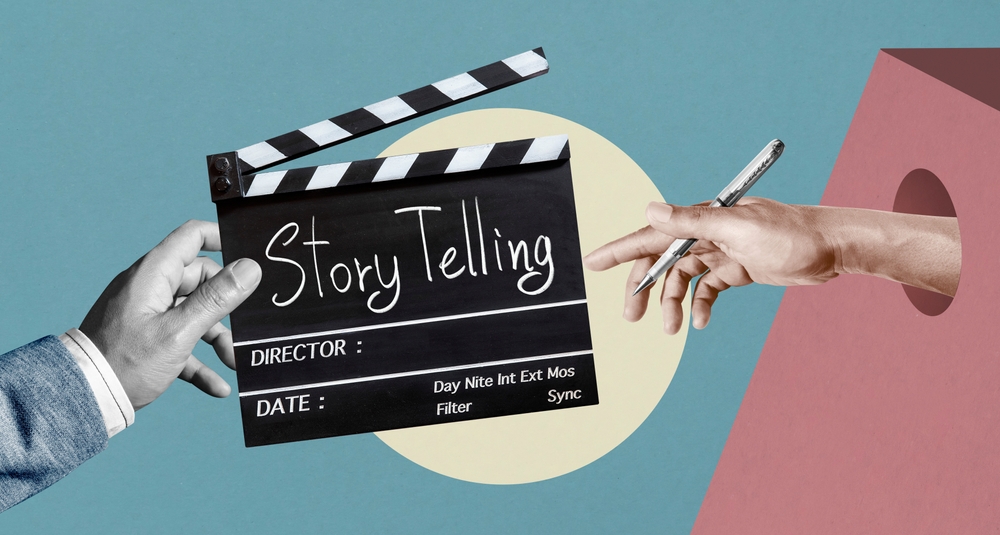Vesud, In today’s hyper-competitive landscape, technical specs and numbers aren’t enough. The real edge? Storytelling that captures hearts and minds. While most startups obsess over data points and metrics, the most memorable ones spark attention by telling stories that connect on an emotional level.
The scene is familiar at pitch events across the globe: founders rattling off statistics, growth forecasts, and market size. But the room stays flat until someone breaks the mold. A founder starts with a personal story. Heads turn. Interest surges. Why? Because stories reach people in ways that numbers never will.
Why Stories Beat Stats Every Time
Humans are biologically hardwired to remember narratives over numbers. It’s been that way for millennia. Stories are how traditions, knowledge, and values have been passed down through generations not graphs.
Consider Patagonia. The company doesn’t just sell jackets it sells a purpose: protecting the planet. That mission-driven narrative helped them surpass $1 billion in revenue. If they had relied on features alone, they would’ve stayed in the shadows of countless other apparel brands.
In fact, neuroscience supports this. Studies show that people retain information better when it’s told through story. In one experiment, 73% of participants forgot pitches heavy on stats within 24 hours while only 32% forgot those told through story.
The message is simple: if you’re not using storytelling intentionally, you’re competing at a disadvantage.
So how do the most successful startups craft stories that cut through the noise? Below are ten proven strategies to embed storytelling into your startup’s foundation.
1. Start With the Frustration That Sparked the Idea
The strongest startup stories begin with a relatable problem not the solution.
Take Warby Parker. One founder lost a pair of expensive glasses and couldn’t afford a replacement. That frustration revealed the eyewear industry’s flaws and launched a disruptive brand story. Don’t polish over the struggle. Own it. That initial pain point makes your startup human.
2. Make Your Customer the Hero
The biggest mistake? Thinking your company is the star. In reality, your customer is the protagonist you’re just the guide.
Shape your messaging so users see themselves achieving success, thanks to your product. Think of your startup as the mentor or sidekick that empowers the hero on their journey.
3. Create a Real Arc: Conflict, Tension, Resolution
Without obstacles, stories feel empty.
Nike nails this. Their ads don’t celebrate victory they highlight the pain of training, the early mornings, the sweat. “Winning Isn’t Comfortable” is compelling because it reflects reality. People identify with the grind, not perfection.
Use real tension from your market or customers’ experience to create a narrative worth caring about.
4. Be Vulnerable It Builds Trust
Flawless brands are forgettable. Authentic brands win loyalty.
Talk about your detours, failures, and changes in direction. Transparency makes you relatable. Audiences connect with leaders who admit challenges it shows resilience and humanity, not just polish.
5. Give Data an Emotional Frame
Data doesn’t move people stories do.
Look at Spotify Wrapped. It’s just user data.. but wrapped in personal, emotional context. People want to share their “year in music” because it feels like their story, not just numbers.
When using stats, tie them to impact. What do your metrics mean for real people?
6. Let Your Customers Tell the Story
No one sells your product better than the people who use it.
Make it easy for customers to share their stories. Whether through social proof, case studies, or user-generated content, let their voices validate your brand. Then feature these stories across your marketing to build authenticity at scale.
7. Translate Your Brand Into Physical Experiences
Your brand shouldn’t live online alone.
Airbnb brings its narrative to life in physical spaces from office design to hosted events. These experiences reinforce their core belief: a world where anyone can belong anywhere.
Find ways to make your brand tangible. Swag, packaging, in-person activations each can extend your narrative into the real world.
8. Align Your Culture With the Story You Tell
A compelling brand story falls apart if your internal team doesn’t reflect it.
If you tell the world you care about sustainability, but your internal policies don’t match, customers will see the disconnect. Build internal processes, values, and hiring decisions that reinforce your external messaging.
Consistency builds trust. Disconnection destroys it.
9. Let Your Narrative Evolve But Keep Its Core Truth
Your brand’s story isn’t static. As your company grows, the story should evolve but its essence should remain.
TOMS started with a one-for-one shoe donation. Today, their impact focus is broader but their social mission is still central. Brands that adapt while staying rooted in their original purpose maintain both relevance and integrity.
10. Anchor Your Brand in Bigger Movements
The strongest brand stories connect with larger cultural conversations.
Dove’s “Real Beauty” campaign wasn’t about soap it was about redefining beauty standards. That resonance turned a basic product into a movement.
Ask yourself: what’s the cultural shift your brand supports? Whether it’s equity, climate, or access, position your product within that larger change.
Final Thought Your Story Is Your Moat
In a world where products are increasingly similar, your narrative is what sets you apart. Features can be copied. Technology can be cloned. But your story told with truth, creativity, and strategy is uniquely yours.
Startups that master storytelling build not just users, but believers. So the question is: will your startup be another forgettable tool… or a brand people remember, relate to, and root for?
